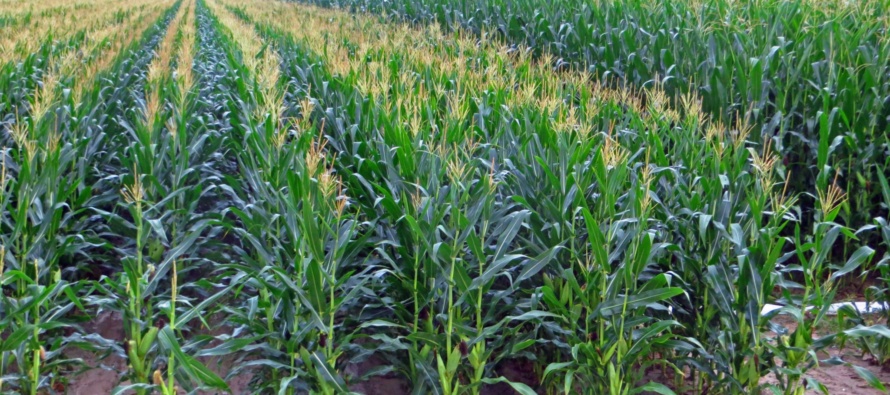Will Short Corn Limit Your Yield Potential?

Related Articles
- 2010 Soybean And Corn Variety Trial Data 3
- Spring Nitrogen Fertility Suggestions for Wheat 0
- 2010 Row Crop Short Course Video Links 0
Latest Tweets
As much of our corn crop reaches tassel stage this year, it is apparent some fields are noticeably shorter than normal. What caused the corn to be short and will it reduce your yield potential?
Corn height can be influenced by both environmental and management factors. The most common management variable which influences corn height, besides hybrid genetics, is planting date. Corn planted early is normally shorter compared to when it is planted at normal to late dates. Early-planted corn progresses through a greater portion of its vegetative development when temperatures are cooler, days are shorter, and conditions are generally less favorable for optimal growth. We also generally experience plenty of wet, saturated soils during the early spring as well in our climate. Wet, saturated soils are of course, quite detrimental to both corn shoot and root development. This presents serious issues, particularly on our heavy textured soils and/or flat or poorly-drained ground. We also see some fields exhibiting tire traffic patterns where plants in rows adjacent the tractor tires are considerably shorter and often pale or even yellow-colored, compared to the rest of the rows. This is a result of considerable soil compaction likely occurring because soils were marginally wet while planting and/or side-dressing the corn crop. Considering the predominant rainy weather we experience during corn planting time, this is, unfortunately, a relatively common issue. However, allowing a little more time for soils to dry would pay big dividends, as there is no remedial treatment that can undo the negative impact of soil compaction during the season.
Will short corn limit yield potential? Not necessarily, after all, early-planting is well-known to generally produce higher corn yields. However, there are potential complications you should be aware of that can overtake benefits gained from early planting or other BMP’s. Corn height can influence overall canopy development, and light interception is a critical factor determining yield potential of corn. Optimal corn yields are generally produced when 90% of available light is intercepted by the crop canopy. Thus, if the canopy light interception still achieves this adequate level, yield potential should not be reduced. However, short corn may struggle to fully canopy our wide-row patterns (38 – 40” rows) common in much of the Mid-South. Corn canopy development is complete after tassel stage, so light interception may be evaluated anytime thereafter. You can evaluate light interception in the field by simply observing the amount of direct sunlight reaching the soil surface when the sun is directly overhead. Thus, you must conduct evaluations during sunny skies during the middle of the day, in order to accurately assess corn light interception.






Thanks Eric!! Good information.